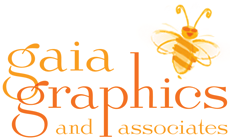
The National Association for Interpretation just unveiled a new logo in a video presentation at the 2007 national convention in Wichita, Kansas.
At first I couldn’t tell what was going on, then I was a little horrified, then I got it. Maybe it’s because I’m a *bleep* designer – you know how they are – but the video cracked me up.
I love this group!
Interpreters are most recognizable as the cheerful people, often wearing Smokey Bear hats, talking to visitors about some natural, cultural or historical features of a place. They might point out a mountain lion track, or explain how Native Americans prepared acorns that may have been harvested from the very tree in whose shade the group is standing. They can show you exactly where the gold was found, or tell a story about a certain Tiffany lamp in a bedroom at Hearst Castle, or dig out a pine nut for you to sample.
Interpreters also work in museums, parks, zoos, and visitor centers. Gaia Graphics & Associates is a member of NAI because the displays we design interpret or explain something interesting about the place they are located. Our goal is to connect, entertain and educate people to deepen their understanding and appreciation of special places.
It’s a serious business full of serious but fun-loving people. I expected the video to show someone discussing the logo’s symbology, form and color… but the designers and NAI staff had other ideas.
Like most logos, NAI’s new logo is open to wildly creative interpretation. That’s what makes it so fun to create logos. After I meet with someone who wants us to design their logo I go to sleep thinking about their company, any colors we discuss, who their market is. Sometimes I wake up with a clear picture of THE logo and sometimes not, but when I sit down to design, the work just flows. Dreams are symbolic and so are logos. Here’s NAI’s description:
This logo uses the unique interaction of the letters NAI to create a form that is open to interpretation. The purely geometric right angles and straight lines convey professionalism and sophistication, while the organic, curved slash and exaggerated dot of the letter I speak to the friendly, informal nature of the field.
The typographic form creates the opportunity for viewers to add meaning. The form references potential readings in an abstract way, with the black portion representing the structured, built environment and the organic, colored elements representing the natural environment. The peaks of the letters N and A could be mountains or rooftops. The cross of the letter A could be the horizon or a river. The letter I could be read as a simple illustration of a human form or its dot could be the setting sun.
The logo will appear as black and one other color. Given the number of different media on which the logo will appear, including clothing, printed materials, and projected media, this flexibility provides the opportunity to create strong color combinations against various backgrounds.
National Association for Interpretation

Thanks so much for your comments about NAI and its logo (and for commenting on it all). I’ve been NAI’s art director for almost six years, and we’ve been talking about updating the logo for almost that entire time. The biggest challenge with developing a logo for this organization was that heritage interpretation represents so many different elements — nature, culture, and history — that it was impossible to represent something literal (like a building, a tree, or a frog) and still be fair to all of our members. We settled on an abstract symbol that is open to interpretation. We’ve heard that it looks like everything from a tipi to a mountain range. As with any logo change, there are people who are attached to the old logo, but the new one has been well-received.
Thanks very much to you and to GAIA Graphics for your comments and support of NAI. You’re right that it’s a great group of folks!
-Paul Caputo (NAI Art & Publications Director)